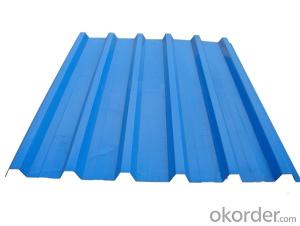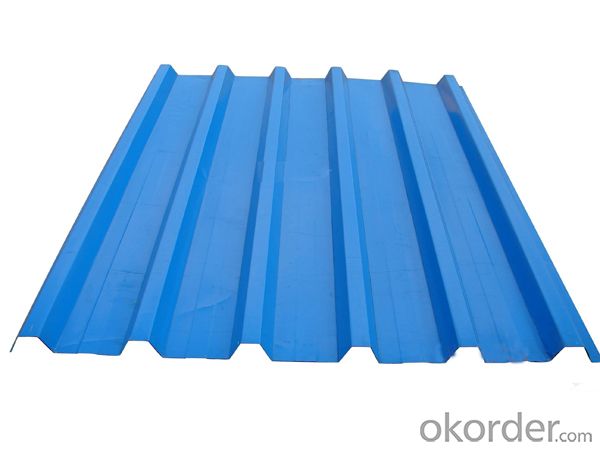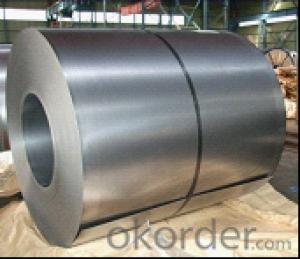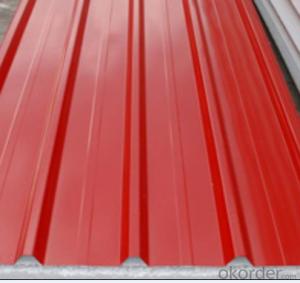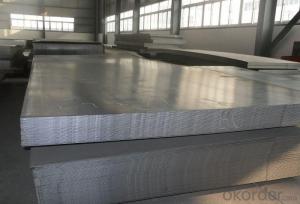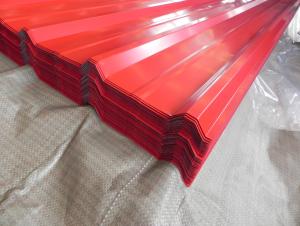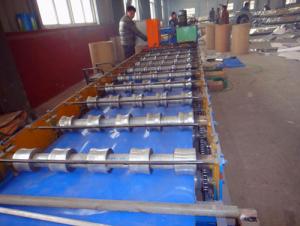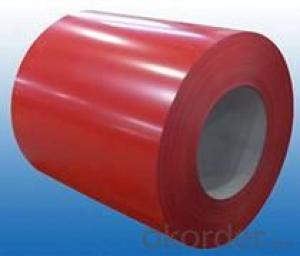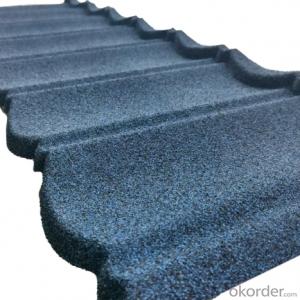Metal Roofing Galvanized Color-coated Sheet
- Loading Port:
- Guangzhou
- Payment Terms:
- TT or LC
- Min Order Qty:
- 1000 m²
- Supply Capability:
- 200000 m²/month
OKorder Service Pledge
OKorder Financial Service
You Might Also Like
Introduction
A metal roof is a roofing system made from metal piece, or tiles. It is a component of the building envelope.Metal roofs protect buildings.
Specifications
metal roofing galvanized color-coated sheet
1 Material:PPGI
2. Long life: 15-20 years
3.Lenth can be customized
Product Description
The Characteristics of our Color Steel Glazed Tiles
It is imitated ancient glazed tiles,with beatiful appearance, Many colors available, with elegant and noble looking.
Easy to be maintained and long life.
It is light, easy to be installed and dismentale.
It has the characteristics of fireproof and resistance of wind.
More suitable for coastal areas.
It can be recycled and good for environments.
Size
width: 840mm
thickness: 0.3-1.2mm
length: as customer’s requirement
expand width: 1000mm
appearance: Colourful,smooth, bright
surface treatment: coated
color: red, or as your requirements
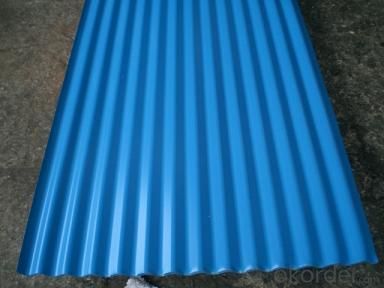
- Q: How are steel sheets protected from rust and corrosion?
- Various methods and coatings are utilized to safeguard steel sheets from rust and corrosion. One widely used technique involves the application of a protective layer known as galvanized coating. This entails immersing the steel sheets in a bath of molten zinc, thereby establishing a barrier between the steel and its surroundings. The zinc coating functions as a sacrificial anode, corroding before the steel does. This sacrificial shield effectively prevents the infiltration of rust and corrosion onto the steel surface. An alternative method of protection involves the use of organic coatings, such as paint. These coatings create a physical barrier between the steel and the external environment, effectively shielding the metal from moisture and other corrosive elements. The application of paint can be accomplished through various techniques, including spraying, rolling, or electrostatic deposition. In addition to galvanized coatings and paint, steel sheets can also be protected through the utilization of other coatings like epoxy or polyurethane. These coatings offer enhanced protection against corrosion, particularly in harsh environments or when the steel sheets are exposed to chemicals or abrasive substances. Regular maintenance and inspections play a crucial role in the prevention of rust and corrosion on steel sheets. This involves surface cleaning, the removal of any debris or contaminants, and the repair of any damaged or worn-out coatings. By adhering to these preventive measures, steel sheets can remain shielded and maintain their structural integrity for an extended lifespan.
- Q: What is the average thickness tolerance for steel sheets?
- The average thickness tolerance for steel sheets varies depending on the specific type of steel and the industry standards. However, in general, the average thickness tolerance for steel sheets is typically around +/- 0.005 to 0.010 inches.
- Q: Can steel sheets be used for decorative column wraps?
- Indeed, decorative column wraps can be created using steel sheets. The versatility of steel sheets allows for easy customization to cater to different design preferences. Whether one desires a sleek and modern look or a more intricate and ornate design, steel sheets can be shaped accordingly. To further enhance the aesthetic appeal and protect against corrosion, steel sheets can be painted or coated with various finishes. Moreover, steel is a durable and long-lasting material, making it suitable for both indoor and outdoor applications. Thus, if one aims to add a contemporary touch or a traditional charm to their space, steel sheets serve as an excellent option for decorative column wraps.
- Q: Are steel sheets suitable for decorative applications?
- Indeed, decorative applications can benefit from the suitability of steel sheets. The versatility, durability, and aesthetic appeal of steel sheets allow for their use in a wide range of decorative purposes. They can be easily shaped, sized, and patterned to fit different needs. Steel sheets offer various possibilities for creating decorative elements such as wall panels, room dividers, ceiling tiles, and facades. They can also be utilized for decorative accents like trims, moldings, and decorative screens. The sleek and reflective surface of steel sheets adds a touch of modernity and elegance to any space. Furthermore, steel sheets can be enhanced with different finishes and coatings to further enhance their decorative properties. These options include paints, powder coatings, patinas, and even specialized coatings like faux rust or metallic finishes. With these choices, steel sheets can complement any interior or exterior decor style, opening up a wide range of design possibilities. Additionally, steel sheets are highly durable and long-lasting, making them suitable for both indoor and outdoor decorative applications. They are resistant to corrosion, fire, and extreme weather conditions, ensuring that the decorative elements made from steel sheets maintain their appearance and functionality over time. To sum up, steel sheets are an excellent choice for decorative applications. Their versatility, durability, and aesthetic appeal make them a perfect option for creating visually appealing and long-lasting decorative elements in various settings.
- Q: What is the typical lead time for steel sheet orders?
- Various factors, such as order quantity, size, steel sheet availability, and supplier location, can affect the typical lead time for steel sheet orders. Generally, lead times can range from a few days to several weeks. For smaller orders or readily available steel sheets, the lead time is usually shorter, typically around a week or less. This is because suppliers typically have these items in stock and ready for immediate shipment upon receiving an order. Conversely, larger or custom orders may require additional production time, resulting in longer lead times. This is due to the need for the supplier to manufacture the steel sheets according to the specific order requirements, which can take several weeks depending on the complexity and volume. It is important to consider that external factors like market demand, transportation delays, or unforeseen circumstances can also impact lead times. Therefore, it is advisable to directly communicate with the supplier to obtain an accurate estimation of the lead time for a specific steel sheet order.
- Q: Can steel sheets be used for kitchen appliances?
- Yes, steel sheets can be used for kitchen appliances. Steel is a durable and versatile material that is commonly used in the manufacturing of various kitchen appliances such as refrigerators, ovens, and dishwashers. It offers excellent heat resistance, is easy to clean, and provides a sleek and modern look to the appliances.
- Q: What is the function of an automobile leaf spring?
- The longitudinal arrangement also has the function of guiding the force transmission. The non independent suspension mostly adopts the leaf spring as the elastic element, and the guiding device and the shock absorber can be omitted. The structure is simple
- Q: Can steel sheets withstand extreme weather conditions?
- Indeed, steel sheets are engineered to endure even the harshest weather conditions. Renowned for its robustness and durability, steel proves to be an optimal substance for withstanding the unforgiving forces of nature, including fierce winds, torrential rain, heavy snowfall, and extreme temperatures. Frequently employed in construction, roofing, and outdoor applications, steel sheets are constantly exposed to diverse weather phenomena. Moreover, these sheets can be covered with protective coatings like galvanized or painted finishes, further fortifying their resistance against corrosion and weathering. Ultimately, steel sheets exhibit remarkable reliability, enduring severe weather conditions with minimal harm or deterioration.
- Q: What is the standard size of a steel sheet?
- The specific application and industry play a significant role in determining the varying standard sizes of steel sheets. However, it is common to find steel sheets in standard sizes like 4 feet by 8 feet (1.2 meters by 2.4 meters) or 5 feet by 10 feet (1.5 meters by 3 meters). These dimensions are widely utilized in construction, manufacturing, and fabrication processes. It is worth mentioning that customized sizes can be obtained to cater to the specific needs of a project or customer.
- Q: Are steel sheets resistant to termites?
- No, steel sheets are not resistant to termites. Unlike materials such as concrete or steel, termites can easily infest and damage steel sheets by burrowing into them and feeding on the wood framing or other organic materials that may be present. Therefore, it is important to take proper measures to protect steel sheets from termite infestation, such as using termite barriers, treating the surrounding soil, or regularly inspecting and maintaining the area to prevent termite entry and damage.
Send your message to us
Metal Roofing Galvanized Color-coated Sheet
- Loading Port:
- Guangzhou
- Payment Terms:
- TT or LC
- Min Order Qty:
- 1000 m²
- Supply Capability:
- 200000 m²/month
OKorder Service Pledge
OKorder Financial Service
Similar products
Hot products
Hot Searches
Related keywords
